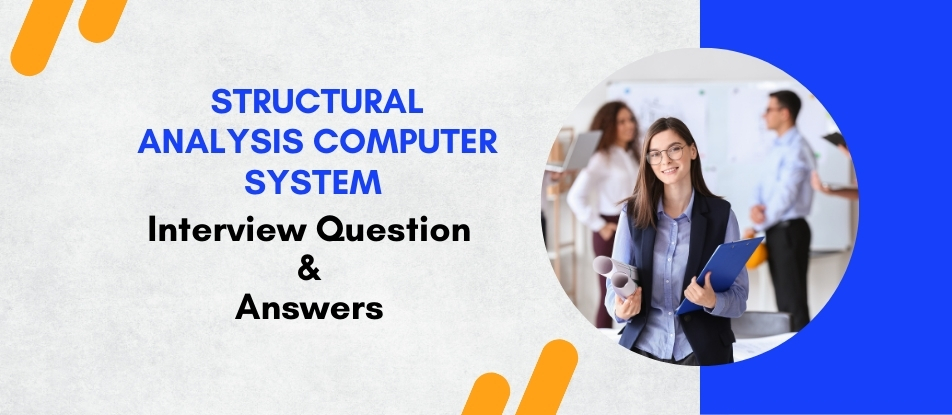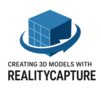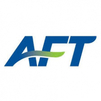
Elevate your engineering expertise with our Advanced SACS Applications course, tailored for experienced professionals. This course delves into complex analyses including nonlinear simulations, spectral fatigue analysis, and seismic assessments using SACS. Learn sophisticated modeling techniques for intricate offshore structures, and explore integration with other engineering software. Enhance your ability to solve challenging engineering problems and optimize designs for safety and efficiency in high-demand environments.
Structural Analysis Computer System (SACS) Interview Questions - For Intermediate
1. How does SACS support the design and analysis of floating production storage and offloading (FPSO) units?
SACS supports FPSO design by offering specialized analysis tools for assessing the stability, mooring, and structural integrity under variable load conditions, critical for the safe operation of these mobile offshore platforms.
2. Discuss the structural monitoring features available in SACS.
SACS includes structural monitoring tools that enable real-time data collection and analysis from sensors installed on structures. This helps in early detection of potential issues, allowing for timely maintenance and interventions.
3. What types of structural optimization can be performed using SACS?
SACS allows for structural optimization by adjusting design parameters to achieve optimal material usage and cost-efficiency while maintaining safety and compliance with design standards.
4. How is the performance of marine risers analyzed in SACS?
The performance of marine risers in SACS is analyzed through dynamic simulation that accounts for wave, current, and interaction effects, ensuring that risers maintain integrity and function under various sea conditions.
5. What are the simulation capabilities of SACS for collision scenarios?
SACS simulates collision scenarios by modeling the impact between offshore structures and vessels or floating objects, assessing the potential damage and structural responses to mitigate risks associated with such incidents.
6. How does SACS facilitate the retrofitting and life extension of offshore structures?
SACS facilitates retrofitting and life extension projects by providing detailed stress analysis and fatigue assessments, allowing engineers to make informed decisions on modifications and upgrades necessary to extend the operational life of existing structures.
7. Can you explain the process of decommissioning analysis with SACS?
Decommissioning analysis in SACS involves simulating the dismantling processes, assessing structural stability during decommissioning, and ensuring that all operations are conducted safely and within regulatory frameworks.
8. What is the impact of hydrodynamic analysis in SACS on offshore platform design?
Hydrodynamic analysis in SACS critically impacts offshore platform design by evaluating the interactions between water movements and structural elements, leading to designs that can withstand the dynamic marine environment.
9. Describe how SACS integrates with other software for comprehensive project analysis.
SACS integrates seamlessly with other engineering software such as AutoCAD and Revit, enabling a multidisciplinary approach to project planning and execution by facilitating data exchange and improving workflow efficiency.
10. What are the challenges in modeling complex geometries in SACS, and how are they addressed?
Modeling complex geometries in SACS can be challenging due to the intricate interactions and load transfers. These challenges are addressed through advanced meshing techniques and the use of finite element analysis to ensure accuracy in simulations.
11. How does SACS handle the analysis of underwater pipelines?
SACS handles the analysis of underwater pipelines by considering the effects of currents, seabed interactions, and internal pressures. It ensures that pipelines are designed to resist environmental and operational stresses.
12. What considerations are taken into account for the maintenance planning of offshore structures using SACS?
Maintenance planning in SACS involves the analysis of load histories, fatigue life predictions, and regular monitoring data to plan timely maintenance that ensures the safety and longevity of offshore structures.
13. How are thermal effects on structures analyzed in SACS?
Thermal effects are analyzed in SACS by simulating temperature variations and their impact on material properties and structural behavior. This is critical for structures exposed to extreme temperatures.
14. What is the significance of the preload analysis in SACS, and how is it conducted?
Preload analysis in SACS is significant for assessing the structural integrity before actual loading conditions are applied. This is conducted by simulating the expected loads and analyzing the structural responses to these conditions.
15. How does SACS contribute to sustainable engineering practices?
SACS contributes to sustainable engineering practices by optimizing material use, reducing waste, and facilitating the design of energy-efficient structures that comply with environmental standards and reduce the ecological footprint.
Structural Analysis Computer System (SACS) Interview Questions - For Advanced
1. Discuss the optimization capabilities in SACS for weight reduction and material usage.
SACS offers optimization capabilities that allow engineers to modify design parameters to achieve minimal weight and optimal material usage without compromising safety. This is achieved through iterative processes that refine the design based on stress, displacement, and fatigue criteria.
2. How does SACS handle the complex analysis of mooring systems?
SACS analyzes mooring systems by modeling the dynamic behavior of mooring lines, anchors, and floats under various environmental conditions. It assesses the system's stability, tension distribution, and overall performance to ensure safety and reliability.
3. What are the challenges associated with the integration of renewable energy structures in SACS, and how are they addressed?
Integrating renewable energy structures such as wind turbines and wave energy converters presents unique challenges such as dynamic loading and interaction with water and wind. SACS addresses these challenges by providing specialized modules that simulate these interactions and evaluate the structural responses to ensure durability and performance.
4. Explain how SACS can be used for damage assessment and repair planning.
SACS can be used for damage assessment by simulating damaged conditions of a structure and analyzing the effects on overall structural integrity. It helps in planning repairs by identifying critical areas that need reinforcement and suggesting suitable methods and materials for restoration.
5. Discuss the impact of climate change considerations on structural design in SACS.
Climate change considerations in SACS involve incorporating changing environmental conditions such as increased wind speeds, wave heights, and sea levels into design and analysis. SACS enables engineers to design structures that are resilient to these changes, ensuring long-term safety and functionality.
6. How does SACS simulate the installation processes of offshore structures?
SACS simulates the installation processes of offshore structures by modeling the various stages of installation, such as lifting, transportation, and placement. This allows for the identification of potential issues and the planning of necessary mitigation strategies to ensure a safe and efficient installation process.
7. What role does SACS play in the lifecycle management of offshore structures?
SACS plays a critical role in the lifecycle management of offshore structures by providing tools for ongoing monitoring, maintenance planning, and decommissioning. It helps manage the structural health over its operational life, ensuring optimal performance and compliance with safety standards.
8. How does SACS handle the evaluation of thermal expansion effects in pipelines?
SACS evaluates thermal expansion effects in pipelines by simulating temperature changes and their impact on pipeline materials and connections. This includes stress analysis due to thermal expansion or contraction and assessing the need for expansion joints or other mitigation measures.
9. Discuss the capabilities of SACS in simulating underwater explosions near structures.
SACS simulates underwater explosions by modeling the shock wave propagation and its interaction with nearby structures. This analysis helps assess the structural resilience against such extreme events and guides the design of protective measures.
10. Explain how SACS can be utilized for the design of hybrid structures combining steel and concrete elements.
SACS can be utilized for the design of hybrid structures by providing analysis tools that account for the different material properties and interaction between steel and concrete elements. This ensures that the composite behavior is accurately modeled, optimizing the structural performance and efficiency.
11. What are the limitations of SACS in modeling very large floating structures, and how can these be overcome?
The limitations of SACS in modeling very large floating structures include handling the complex interactions between multiple floating bodies and the sea. These can be overcome by integrating SACS with specialized hydrodynamic simulation software that can provide more detailed modeling of such interactions.
12. How does SACS assist in the certification process of offshore structures?
SACS assists in the certification process by ensuring that all designs meet the required safety and performance standards set by certifying bodies. It provides documentation and analysis results that demonstrate compliance with these standards.
13. Discuss the future trends in offshore structure analysis that SACS might incorporate.
Future trends in offshore structure analysis that SACS might incorporate include the use of machine learning for predictive maintenance, increased integration with BIM (Building Information Modeling) systems for enhanced project management, and advanced simulation of renewable energy integrations.
14. How does SACS handle the analysis of multi-layered soil models in foundation design?
SACS handles the analysis of multi-layered soil models by using advanced geotechnical simulation to account for the varying properties of different soil layers. This provides a more accurate foundation design that can adapt to complex soil conditions.
15. What advanced visualization tools does SACS offer for the analysis results?
SACS offers advanced visualization tools that include 3D modeling, animation of dynamic responses, and detailed stress and deformation plots. These tools help engineers better understand complex behaviors and effectively communicate findings and design recommendations to stakeholders.
Course Schedule
| Dec, 2025 | Weekdays | Mon-Fri | Enquire Now |
| Weekend | Sat-Sun | Enquire Now | |
| Jan, 2026 | Weekdays | Mon-Fri | Enquire Now |
| Weekend | Sat-Sun | Enquire Now |
Related Courses
Related Articles
Related Interview
- Advanced Piping Stress and Flexibility Analysis Training Interview Questions Answers
- EMERSON DeltaV DCS Training Interview Questions Answers
- Bentley Open Rail Training Interview Questions Answers
- SAP DRC Training Interview Questions Answers
- AZ-104: Microsoft Azure Administrator Interview Questions Answers
Related FAQ's
- Instructor-led Live Online Interactive Training
- Project Based Customized Learning
- Fast Track Training Program
- Self-paced learning
- In one-on-one training, you have the flexibility to choose the days, timings, and duration according to your preferences.
- We create a personalized training calendar based on your chosen schedule.
- Complete Live Online Interactive Training of the Course
- After Training Recorded Videos
- Session-wise Learning Material and notes for lifetime
- Practical & Assignments exercises
- Global Course Completion Certificate
- 24x7 after Training Support















 Join our Live Instructor-Led online classes delivered by industry experts
Join our Live Instructor-Led online classes delivered by industry experts